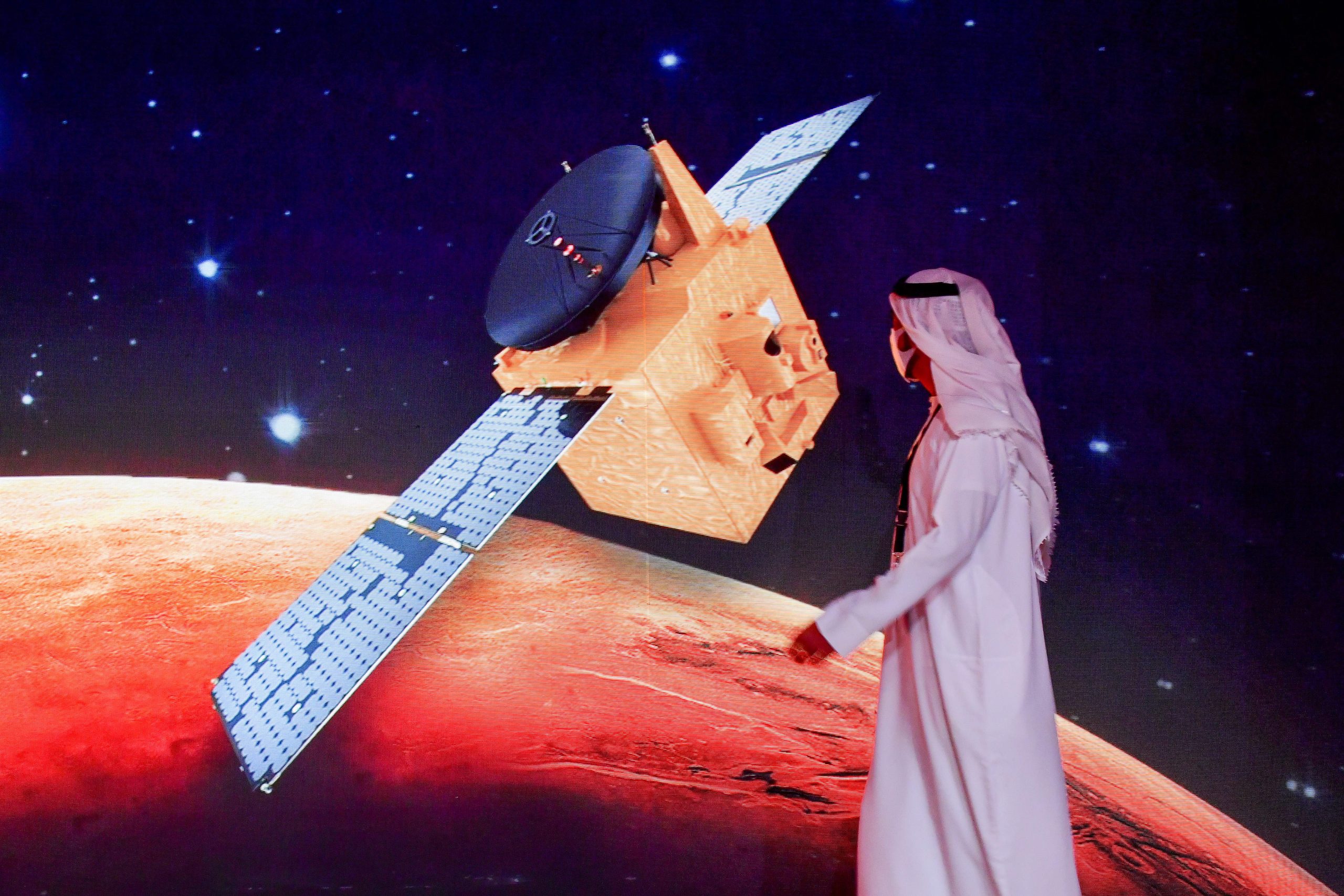“UAE’s Hope Probe Captures Most Precise Image Yet of Mars’ Mysterious ‘Lumpy’ Moon, Phobos”
The United Arab Emirates’ (UAE) Hope Probe has captured the most precise image to date of Mars’ mysterious “lumpy” moon, Phobos. The image was released on Tuesday, April 25, 2023, and is one of the first high-resolution images of Phobos ever taken.
Phobos is the larger of Mars’ two moons and has long puzzled scientists due to its irregular shape and lumpy appearance. It is thought to be an asteroid that was captured by Mars’ gravity, rather than a moon that formed in orbit around the planet.
The new image was captured by the Hope Probe’s Emirates Mars Ultraviolet Spectrometer (EMUS), which is designed to study the Martian atmosphere. The EMUS instrument was used to observe Phobos in ultraviolet light, which revealed the moon’s surface features in greater detail than ever before.
The image shows Phobos’ surface in remarkable detail, revealing its rugged terrain and numerous craters. The moon’s odd shape is also clearly visible, with its irregular surface and lumpy appearance clearly apparent.
The image was captured from a distance of around 3,500 km from Phobos, making it one of the most detailed images ever taken of the moon. It is hoped that the new data captured by the Hope Probe will help scientists to better understand the origin and evolution of Phobos.
The Hope Probe, also known as the Emirates Mars Mission, was launched by the UAE in July 2020. Its primary goal is to study the Martian atmosphere and weather patterns, as well as the planet’s climate and geology.
The spacecraft is equipped with a range of scientific instruments, including a high-resolution camera, a spectrometer, and an ultraviolet spectrometer. It is expected to continue collecting data for at least one Mars year, which is equivalent to around 687 Earth days.
The UAE’s Mars mission is the latest in a series of ambitious space exploration projects being undertaken by nations around the world. With the continued development of new technology and the increasing interest in space exploration, it seems likely that we will continue to learn more about our solar system and the universe beyond




